The Davis Linden Building at 400 Linden Avenue is a prominent surviving industrial structure connected to Dayton’s legacy as a manufacturing powerhouse. It’s also a good example of a larger building that was able to be saved and reborn for a new age, unlike so many others that were razed after their companies moved on.
Early History: The Davis Sewing Machine Company
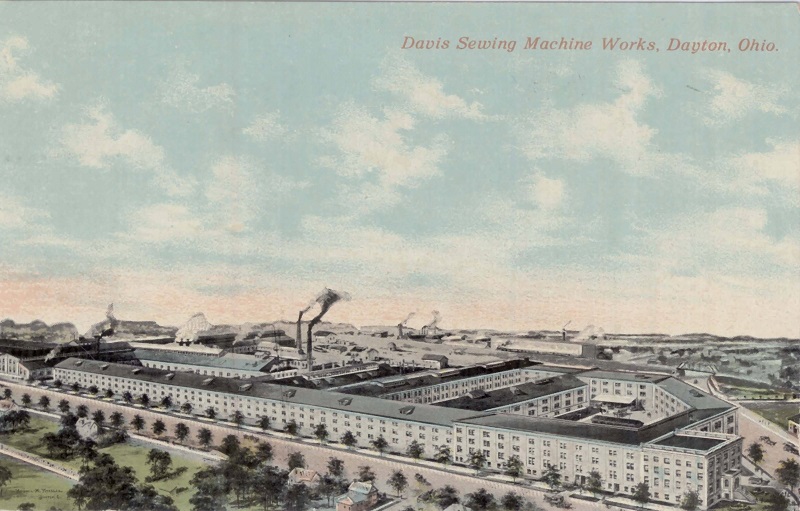
Business relocations in the later decades of the 20th century overwhelmingly flowed away from Dayton, but around the turn of the 19th century it was Dayton that attracted firms that had been founded elsewhere.
The Davis Sewing Machine Company is one of them, having originated in Watertown, NY in 1868. In 1889 it moved to Dayton under the leadership of George P. Huffman and its factory site was selected at Davis and Linden Avenues.
At its height the factory spanned some seven acres including 60 buildings and 2,000 workers, many of whom lived nearby in the Huffman neighborhood. Around this time its annual output was 128,000 sewing machines.
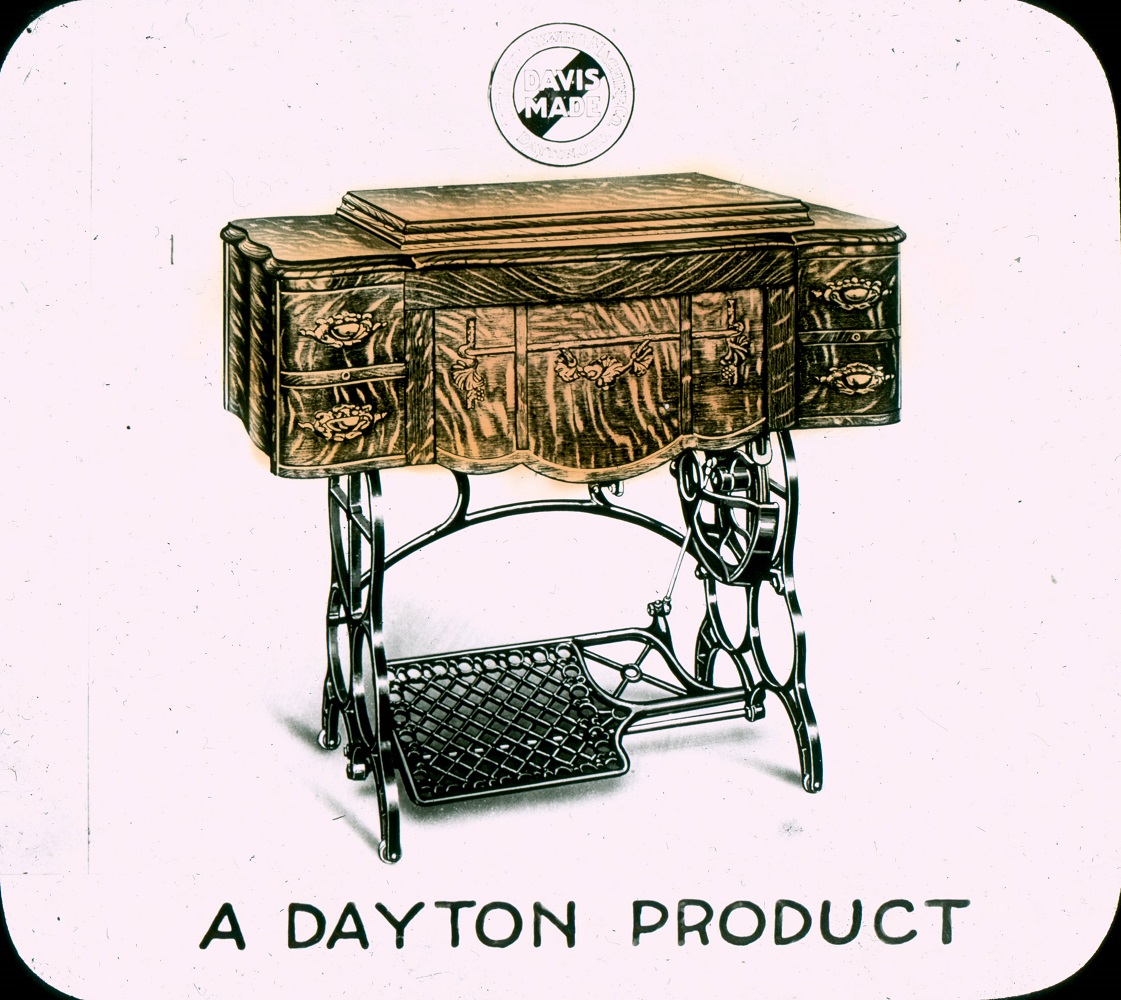
The company was a prominent part of Dayton’s industrial legacy. As explained in a Dayton Daily News article: “the manufacture of sewing machines was the second largest industry in Dayton and one that carried the city’s name and fame farther than any other local product.” (It was second only to Dayton’s car works factories.)
The company expanded from sewing machines in 1892 and began producing bicycles as well, capitalizing on a nationwide craze that inspired many other local firms, including the Stoddard Manufacturing Co (later Dayton Motor Car Company) and the Wright Brothers. Bicycles proved so successful that sewing machines were slowly phased out.
In 1925, the Davis Sewing Machine Company was sold, and the profits were used to create the Huffman Manufacturing Company which grew into a titan of the bicycle industry, later to be renamed the Huffy Corporation which operates to this day.
In 1955 the factory was moved to Celina, Ohio, but much of the complex has been converted to new uses.
Beginning in the 1970s, artists and crafters began to use the large spaces as studios. The Linden-Davis building evolved into “a commercial co-op, offering rental spaces to small businesses, artists, musicians and Dayton-area entrepreneurs in need of a working environment.”
As of 2016, new owner Matt Dieringer invested in improvements including lighting and new trees along Linden Ave and updated electrical systems inside. At that time there were over 40 tenants “churning out artwork, household furniture, laser dyes, and more” and 83,000 square feet were leased out with another 50-60,000 left to develop.



Additional Sources
Historic Huffman Holiday Home Tour
Davis-Linden Building headed toward a renaissance
The Story of the Davis Company: History Repeats Itself
Historic Images Courtesy of Dayton Metro Library

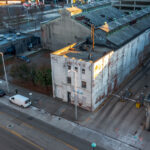
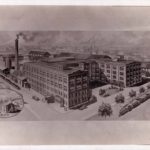
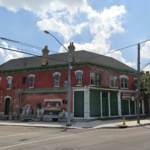
I had no idea how huge the original factory was – that side by side comparison at the end really shows it well. Those old sewing machines were works of art, and living in the Huffman district, I insisted on getting a Huffy when I bought a bike last year….that has an awesome collection of dust on it since I haven’t ridden it all summer. 🙂 Thanks for sharing!
I worked in the Linden Davis building from 1987 to 1999. Some of the best years of my life. Granted the building was kinda run down but I loved that place. The wood timbers used to build the place were massive. I’m not sure trees that big are still available. All in all a wonderful piece of history, I would like to drop by for old times sake
is it true,? hear say huffy NOS was still in the area